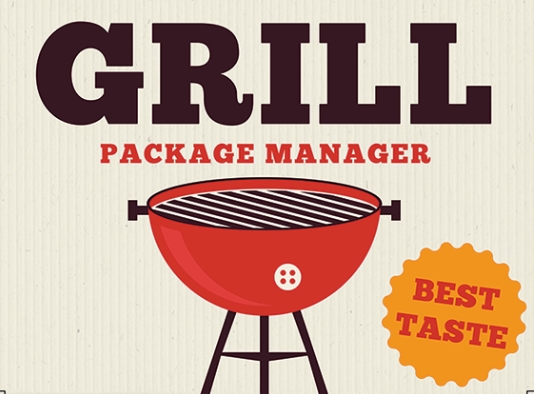Wurst 精选 10
Wurst 精选 10

在三月和四月初,我们推出了先前宣布的 wurst.build 配置文件改进,允许进一步基于代码的地图元数据自定义,并为我们设想的未来 wurst 独立地图生成管道奠定了更多基础。
现在,您可以通过我们新的 Grill 包管理器从命令行充分利用该工具套件。此外,标准库迎来了 DamageEvent:一个新的伤害检测和修改 API,它支持并使用了新的 1.29 原生函数。
工具
- 对
wurst.build配置工作流进行了升级。您现在可以修改场景数据,如玩家、队伍和加载屏幕,所有这些都无需打开世界编辑器。更多信息请参阅教程。 - WurstSetup 进行了界面更新,包括自动更新、更好的异步任务以及为高级用户提供的完整 CLI 功能。
compiletime表达式内的对象和其他分配现在会在运行时保留以供使用。- 更新了
switch语句,支持合并 case、重复 case 检测和控制流改进。 - 实验性支持 @lep 的 “热代码重载”,该功能允许在地图运行时修改代码。
标准库
我们合并了十几个拉取请求,并修复了大量错误,这要感谢众多贡献者,我们对此感到非常兴奋。主要亮点包括:
- 添加了用于伤害检测和修改的新包
DamageEvent,并弃用了旧的DamageType包。 - 用于
ClosureTimer执行的计时器现在可以自定义,从而可以创建计时器对话框。 - 包
LastOrder已被清理和修复。 - 包
Printing现在可以完全配置。 - 包
ClosureEvents现在仅在使用了鼠标事件时才会监听它们。 - 包
OrderStringFactory不再生成默认的单位命令字符串,以便在事件中可以区分它们。 - 将
damageTarget和isAliveTrick从 unit 推广到 widget。 - 为
flashEffect添加了额外的重载。 - 添加了简写
.setDummyAbility(),使任何技能都可以由虚拟施法者施放。 - 现在可以通过虚拟施法者 API 访问
DummyCaster的虚拟单位。 - 修复了 UnitIndexer 中的嵌套索引/取消索引问题。
- 修复了计数回调在某些情况下无法正常停止的问题。
- 修复了
image.hideForPlayer,并改进了图像文档。 - 修复了
TimedLoop实例在停止循环后执行不正确的问题。
网站
- 添加了更多并改进了现有的标准库文档页面。
- 我们最近还推出了一个新的关于闭包的教程 - 一定要去看看。
- 教程、标准库和博客文章的网页界面面包屑导航现在包含所有父级。
- 我们的域名现已在 GitHub 上得到验证。
焦点

简介
如果您已经使用 Wurst 一段时间,您很可能已经使用过 Wurst Setup 工具来安装 WurstScript、生成项目和更新依赖项。我们首先从图形化解决方案开始,以便每个人都能轻松安装和使用 wurst。现在 Setup 工具已经成熟,我们正在为更高级的终端用户改进命令行界面。
请注意,所有这些改进都是在现有设置的基础上添加的,如果您不想使用它们,也完全可以!这里唯一的破坏性变更是新的命令行参数语法,它现在是统一的,并且与其他包管理器更加一致。不带任何参数运行 grill 将像以前一样打开 GUI (Wurst Setup) 前端。传递任何参数都将假定为 CLI 用法。
Grill 包装器
由于所有新增功能都保留在 setup 工具中,我们自豪地推出 grill 包装器,以便在任何系统上轻松使用 setup 工具的 CLI。
如何获取?
只需使用 setup 工具的 UI 来安装或更新您的 wurstscript 安装。所有新功能都已包含在内。
为了在系统范围内的 shell 中正确使用 grill 命令,您需要将 Wurst 安装文件夹 (~/.wurst) 添加到您的环境 PATH 变量中。具体操作方法因平台而异 - 请参阅此教程。在 Windows 10 上,最终结果应如下所示:

现在您可以使用 grill 命令了。表情符号的支持取决于您使用的特定终端。

无头执行
拥有功能齐全的命令行界面的主要好处是,您可以在没有显示器(无头)的系统上运行它。这使我们能够轻松地自动化 wurst 地图文件的构建过程 - 例如在持续集成中,如下所述。
向 grill 传递任何命令行参数可确保不会有用户界面提示用户。
特殊的 wurstscript 包
使用 grill install wurstscript 来安装或更新现有的 WurstScript 工具。安装将与 setup 工具相同,位于您的用户主文件夹 ~/.wurst 中。
生成新项目
grill generate <project_name> 将创建一个以您选择的名称命名的新目录,并在其中生成一个新的 wurst 项目。生成的内容包括默认标准库依赖项的最新副本以及基本的 vscode 项目配置元数据。
导入现有项目
与安装 WurstScript 或生成项目不同,以下命令应在您项目的根文件夹中运行。
如果您有一个现有项目,或者想为他人的项目做贡献,您只需在克隆/复制后安装一次项目即可。这将获取项目所需的所有依赖项的本地副本。
$ git clone <git_repo_url>
$ cd <repo_name>
$ grill install
包管理
grill 不是一个功能完备的包管理器,因为它不解析传递性依赖。它主要是为您拉取一个 git 仓库列表,并为 wurst 编译配置它们。很快,我们将添加对分支或提交 ID 依赖的支持。以下命令必须在项目的根文件夹内执行。
安装新的 git 依赖: grill install <git_repo_url>
移除 git 依赖: grill remove <git_repo_url>
更新现有依赖: grill install
持续集成
简而言之,CI 是在每次版本更改(提交)时自动化构建和测试项目的过程。流行的 git 主机(如 bitbucket、gitlab 和 github)使我们能够将 CI 用于我们的 wurst 项目。可以说,最简单的方法是使用 docker-wurst 镜像。
Wurst Docker 镜像
Docker 提供了将应用程序和系统容器化为镜像的机制,这些镜像的运行方式类似于虚拟机。该虚拟机预装并预配置了所有工具和依赖项,因此您可以立即从命令行使用 grill。
$ docker run --rm -it frotty/wurstscript /bin/sh -c "grill help"
就是这样。我们希望您喜欢 BotW 系列的第十篇文章。